A Journey Through History: The Imperial Altars and Temples Complex Explored

An Essential Guide to Visiting Imperial_Altars_And_Temples_Complex
Nestled within the vibrant landscape of Beijing lies a treasure trove of ancient history and spiritual significance—the Imperial Altars and Temples Complex. This collection of sacred sites, comprised of the Temple of Heaven (Tiantan), the Altar of Earth (Ditan), the Sun Altar (Ritan), the Moon Altar (Yue Tan), and the Agricultural Altar (Xiannong Tan), is a captivating journey through China’s imperial past, where emperors once performed grand rituals to honor celestial deities and ensure the prosperity of their realm.
As you wander through these serene grounds, each altar tells its own unique story, reflecting the profound connection between the heavens and the earth that ancient Chinese civilization cherished. The architectural splendor of these sites is matched only by their tranquil surroundings, providing a perfect escape from the bustling city life. Whether you are a history enthusiast, a lover of architecture, or simply seeking a peaceful retreat, the Imperial Altars and Temples Complex offers something for every traveler.
From the meticulously designed structures of the Temple of Heaven, known for its iconic circular architecture and vibrant colors, to the lush gardens and serene pathways of the other altars, visitors can immerse themselves in the rich tapestry of China’s cultural heritage. Each season brings its own charm—spring blossoms, summer greenery, autumn hues, and winter tranquility—making it an ideal destination year-round.
Prepare to embark on an unforgettable exploration of these cultural gems, where history, spirituality, and natural beauty converge to create a truly enriching experience. Whether you’re here to reflect, take photographs, or simply enjoy a leisurely stroll, the Imperial Altars and Temples Complex is a must-visit on your journey through Beijing.
In This Guide
- An Essential Guide to Visiting Imperial_Altars_And_Temples_Complex
- The Rich History and Legends of Imperial_Altars_And_Temples_Complex
- Main Highlights: What You Absolutely Can’t Miss
- Planning Your Visit: A Practical Guide
- Tickets: Prices, Booking, and Tips
- How to Get There: A Complete Transportation Guide
- Local Cuisine and Accommodation Nearby
- Frequently Asked Questions
- Final Thoughts on Your Trip
The Rich History and Legends of Imperial_Altars_And_Temples_Complex
Situated in the heart of Beijing, the Imperial Altars and Temples Complex is a treasure trove of history and culture, resonating with the echoes of ancient dynasties. This remarkable site comprises five significant altars: the Temple of Heaven (天坛), Altar of Earth (地坛), Altar of the Sun (日坛), Altar of the Moon (月坛), and the Altar of Agriculture (先农坛). Each of these altars served distinct ceremonial purposes during the Ming and Qing dynasties, collectively reflecting the spiritual and agricultural practices of imperial China.
The history of these altars dates back to the early 15th century with the establishment of the Temple of Heaven in 1420. This magnificent structure was designed as a sacred venue for the emperor to conduct rituals to pray for good harvests and divine favor. The design symbolizes the ancient Chinese cosmological belief of “Heaven is round and Earth is square,” with the circular structure of the Temple representing Heaven and the square surrounding it symbolizing Earth. The meticulous layout and architectural harmony of the Temple of Heaven have made it a UNESCO World Heritage Site and a quintessential example of Chinese architecture.
Following the Temple of Heaven, the Altar of Earth was constructed in 1530 as a counterpart, where emperors would conduct ceremonies to honor the Earth deity. This altar is noted for its imposing stone structure and the ancient trees that surround it, providing a serene backdrop for reflection on the relationship between humanity and the natural world.
The Altar of the Sun, established in the early 16th century, was a significant site for worshipping the sun, integral to agricultural societies that relied heavily on sunlight for crop growth. This altar features a unique architectural style, with its walls adorned with intricate carvings and a ceremonial pathway that was once traversed by emperors during significant rituals.
The Altar of the Moon, built around the same time, served as a site for ceremonies dedicated to the moon deity. It was traditionally used during the Mid-Autumn Festival, where the emperor would offer sacrifices in hopes of ensuring a bountiful harvest.
Last but not least, the Altar of Agriculture holds a special place in the hearts of the Chinese people. Established in 1420, it was here that emperors would perform rituals to honor the agricultural gods, symbolizing the importance of farming in sustaining the nation. This site not only emphasizes the significance of agriculture in ancient China but also marks the emperor’s role as the divine mediator between the heavens and the earth.
Today, the Imperial Altars and Temples Complex is recognized not just for its historical importance, but also for its role in contemporary culture. As tranquil public parks, these sites attract visitors who come to appreciate their beauty, history, and the deep-rooted legends that they embody. Each visit offers a glimpse into a time when emperors sought divine guidance and blessings for their reigns, making it a must-see for anyone wishing to understand the rich tapestry of Chinese heritage.
In conclusion, the Imperial Altars and Temples Complex stands as a testament to the enduring legacy of Chinese civilization, offering modern travelers an opportunity to connect with the past while enjoying the serene beauty of these historical sites. Whether you’re wandering through the lush landscapes of the Temple of Heaven or reflecting on the ancient rituals at the Altar of Agriculture, the spirit of imperial China is alive and well in this remarkable complex.
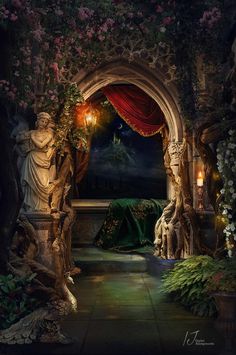
Imperial_Altars_And_Temples_Complex.
Main Highlights: What You Absolutely Can’t Miss
When exploring the Imperial Altars and Temples Complex in Beijing, you’ll encounter a rich tapestry of history, architecture, and serene landscapes. Here are the key highlights that you absolutely cannot miss during your visit:
1. Ritualistic Significance of the Altars
Each altar within the complex plays a vital role in the historical narrative of the Ming and Qing dynasties. The Altar of the Sun (日坛), for instance, was specifically designated for the emperors to pay homage to the sun god, showcasing the deep-rooted reverence for celestial forces in traditional Chinese culture. The Altar of Agriculture (先农坛) served as a site for agricultural rites, emphasizing the importance of farming and nature in sustaining life and the empire.
2. Architectural Grandeur
Be prepared to be awed by the architectural splendor of these ancient sites. The Altar of Heaven (天坛), with its iconic circular Heaven Temple, features intricate details and symbolism that reflect the ancient Chinese cosmology of heaven and earth. The design principles behind these altars harmoniously blend functionality with aesthetic grandeur, making them masterpieces of ancient engineering.
3. The Breathtaking Landscapes
The gardens surrounding these altars are not just a backdrop but an integral part of the experience. Each season offers a different palette of colors, from the blooming tulips in spring at the Altar of the Sun to the golden ginkgo leaves that carpet the ground in autumn at the Altar of the Earth (地坛). Take a leisurely stroll through these parks, where the lush greenery and tranquil ponds provide a perfect escape from the city’s hustle and bustle.
4. Cultural Events and Ceremonies
If your timing is right, witness the cultural events that often take place at these altars. The Spring Festival celebrations at the Altar of Earth, featuring traditional performances and rituals, provide a fascinating glimpse into the cultural heritage of Beijing. The vibrant atmosphere filled with music, dance, and art is a delightful way to engage with local traditions.
5. Artistic Masterpieces
Do not miss the Sun Worship Mural (祭日壁画) located at the Altar of the Sun. This mural vividly depicts the ceremonial rites performed by emperors, showcasing the artistic talent of the era. The vibrant colors and intricate details allow you to step back in time and appreciate the spiritual significance that these rituals held for the ruling class.
6. The Spiritual Pathways
Walk along the Sacred Road (神路) leading to the Altar of the Sun. This pathway, lined with ancient trees, was historically used by emperors to reach the altar for their rituals. As you walk along, imagine the grandeur of imperial processions and the weight of history that this path embodies.
7. The Altar of the Moon (月坛)
Visit the Altar of the Moon, known for its serene atmosphere and beautiful landscaping. Here, the white-glazed tiles symbolize the moon, and the architecture reflects lunar themes. This lesser-known site is a peaceful retreat, perfect for contemplation and photography.
8. Accessibility and Visitor Experience
The complex is open year-round, with free entry to many areas, making it accessible for all travelers. Facilities are designed to accommodate visitors, including wheelchair access, ensuring a comfortable experience as you explore the sacred grounds.
Each visit to the Imperial Altars and Temples Complex is a journey through time, offering insights into the spiritual and cultural fabric of ancient China. Whether you’re an architecture enthusiast, a history buff, or simply looking for a peaceful retreat, these highlights will surely enhance your exploration of Beijing’s imperial heritage.
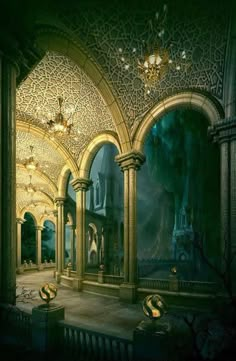
Imperial_Altars_And_Temples_Complex.
Planning Your Visit: A Practical Guide
Planning Your Visit: A Practical Guide
Exploring the Imperial Altars and Temples Complex in Beijing is a journey into the heart of China’s rich cultural heritage. This guide will help you navigate your visit to the complex, ensuring you make the most of your time at these historic sites.
Getting There
The Imperial Altars and Temples Complex, which comprises the Temple of Heaven (Tiantan), the Altar of Earth (Ditan), the Altar of the Sun (Ritan), the Altar of the Moon (Yuetan), and the Altar of Agriculture (Xiannongtan), is conveniently located within the city. Here’s how to reach them:
- Public Transport: The Beijing subway is the most efficient way to get to each site. For example:
- Temple of Heaven: Take Line 5 to Tiantan Dongmen Station.
- Altar of Earth: Take Line 2 to Ditan Park Station.
- Altar of the Sun: Although slightly less accessible by subway, you can take Line 1 to Chaoyangmen and walk approximately 15 minutes.
- Altar of the Moon: Accessible via Line 4 to Xidan Station and a short taxi ride.
-
Altar of Agriculture: Take Line 7 to Fuxingmen Station, then a taxi or a 20-minute walk.
-
Taxi/Ride-Sharing: Using a taxi or ride-sharing app can be a comfortable option, especially if you are traveling with family or in a group. Fares are relatively inexpensive, with rides typically costing around 30 RMB from central Beijing to any of the altars.
Admission Fees and Opening Hours
One of the great advantages of visiting these historical sites is that many of them are free to enter, making them accessible to all visitors.
- Temple of Heaven:
- Entry Fee: 15 RMB (peak season); 10 RMB (off-peak).
-
Opening Hours: 6:00 AM – 9:00 PM (seasonal hours vary).
-
Altar of Earth:
- Entry Fee: 2 RMB.
-
Opening Hours: 6:00 AM – 9:30 PM (peak season); 6:00 AM – 8:30 PM (off-peak).
-
Altar of the Sun:
- Entry Fee: Free.
-
Opening Hours: Open all day.
-
Altar of the Moon:
- Entry Fee: 1 RMB.
-
Opening Hours: 6:00 AM – 9:00 PM.
-
Altar of Agriculture:
- Entry Fee: Free.
- Opening Hours: 8:30 AM – 7:00 PM.
Recommended Itinerary
To fully appreciate the grandeur of the complex, consider the following route, which allows you to visit each altar in a logical sequence:
-
Temple of Heaven: Start your day here. Arrive early to enjoy the serene morning atmosphere as locals practice Tai Chi and engage in morning exercises. Don’t miss the iconic Hall of Prayer for Good Harvests.
-
Altar of Earth: Next, head to the Altar of Earth. This site is ideal for a peaceful stroll among ancient trees and historical structures.
-
Altar of the Sun: Afterward, visit this smaller, yet beautifully landscaped site, perfect for photography and relaxation.
-
Lunch Break: Enjoy a meal in nearby restaurants that offer traditional Beijing cuisine, such as Peking Duck or dumplings.
-
Altar of the Moon: Post-lunch, explore the Altar of the Moon. Its tranquil gardens and beautiful architecture provide a serene escape.
-
Altar of Agriculture: Finally, visit the Altar of Agriculture, where you can learn about ancient agricultural rituals and enjoy the lush surroundings.
What to Bring
- Comfortable Shoes: Expect to walk a lot, so wear comfortable footwear.
- Camera: Capture the stunning architecture and beautiful gardens.
- Water Bottle: Stay hydrated, especially during the warmer months.
- Cash: While many places accept cards, some smaller vendors may only take cash.
Nearby Attractions and Dining
After exploring the altars, consider visiting nearby attractions such as the Forbidden City or Tiananmen Square, both rich in history and culture. For dining, explore the local eateries, especially around Wangfujing Street, which is famous for its street food and traditional restaurants.
Frequently Asked Questions
- Is it suitable for families? Yes, the parks are family-friendly with ample space for children to play.
- Are there facilities for those with mobility issues? Most altars have accessible paths and facilities, making it easier for wheelchair users or those with strollers.
- What’s the best time to visit? While the altars are beautiful year-round, spring (April to June) is particularly lovely, with blooming flowers and pleasant weather.
Visiting the Imperial Altars and Temples Complex is not just about the sights; it’s a step back in time to understand the cultural and historical significance of these sacred spaces in Chinese tradition. Enjoy your journey!
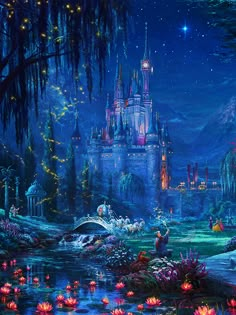
Imperial_Altars_And_Temples_Complex.
Tickets: Prices, Booking, and Tips
Visiting the Imperial Altars and Temples Complex, which includes the Sun Altar (日坛), Moon Altar (月坛), Earth Altar (地坛), and the Agricultural Altar (先农坛), is a captivating experience for international travelers seeking to immerse themselves in Beijing’s rich historical tapestry. Below is essential information regarding ticket prices, booking procedures, and helpful tips to enhance your visit.
Ticket Prices and Booking
One of the most appealing aspects of the Imperial Altars and Temples Complex is that entry to all the altars is free of charge. This makes it an accessible destination for everyone, allowing you to explore the serene environments and grand architecture without any financial barrier.
-
Sun Altar (日坛): Free entry, open daily from 6:00 AM to 9:00 PM in peak season and until 10:00 PM in the off-season.
-
Moon Altar (月坛): Also free, accessible from 6:00 AM to 9:00 PM.
-
Earth Altar (地坛): Entrance fee is only 2 RMB. Open from 6:00 AM to 9:30 PM in peak season and until 8:30 PM in the off-season.
-
Agricultural Altar (先农坛): Free entry, open from 8:30 AM to 7:00 PM.
Booking Tips
While tickets are free, visitors should consider the following tips for a more enjoyable experience:
-
Plan Your Visit: These sites are best enjoyed during weekdays when crowds are thinner. Early mornings or late afternoons are ideal for pleasant weather and stunning light for photography.
-
Self-Guided Tours: Informative signage is available at the altars, but consider downloading a travel app or guide to enrich your understanding of the historical significance of each altar.
-
Transportation: Public transport is recommended due to limited parking. The nearest subway stations are within a 15-minute walk of the altars. Use the Beijing Subway: Line 1 to Yong’anli Station for the Sun Altar, or Line 2 to Chaoyangmen Station for the Moon Altar.
-
Accessibility: All altars are wheelchair-friendly, ensuring everyone can enjoy the beautiful grounds and structures.
-
Pack Essentials: Bring water and snacks, as there are limited food options nearby. Comfortable walking shoes are a must, as exploring the grounds requires some walking.
-
Check Seasonal Events: Some altars host cultural events or festivals throughout the year, adding vibrancy to your visit. Check online for any scheduled activities during your stay.
By planning ahead and taking advantage of the free entry, you can fully appreciate the cultural heritage and natural beauty of the Imperial Altars and Temples Complex. Enjoy your journey through time in these serene historical sites!
How to Get There: A Complete Transportation Guide
When planning your visit to the Imperial Altars and Temples Complex in Beijing, navigating the city’s transportation options is essential for a smooth experience. This guide will help you get to these historic sites, including the Sun Altar (日坛), Moon Altar (月坛), Earth Altar (地坛), and the Agricultural Altar (先农坛).
Getting to the Imperial Altars and Temples Complex
By Subway
The Beijing subway system is efficient and a convenient way to reach the complex:
- Sun Altar (日坛公园):
- Take Line 1 to Yonganli Station, exit from A1 and walk approximately 15 minutes.
-
Alternatively, take Line 2 or Line 6 to Chaoyangmen Station, exit from A and walk around 15 minutes to the park.
-
Moon Altar (月坛):
-
Get off at Taoranting Station on Line 4 and then take a short bus or taxi to the Moon Altar.
-
Earth Altar (地坛):
-
Take Line 5 to Ditan Park Station. The Earth Altar is just a short walk from the station.
-
Agricultural Altar (先农坛):
- The nearest subway station is Xuanwumen Station on Line 4. From there, it’s about a 20-minute walk to the Altar.
By Bus
Beijing’s bus network may be less straightforward than the subway, but it offers direct routes to the complex:
- Sun Altar: Take buses 42, 44, or 120 to Ritan Park Station.
- Moon Altar: Buses 12 and 82 stop near the Moon Altar.
- Earth Altar: Buses 101 and 109 run to Ditan Park Station.
- Agricultural Altar: Buses 83, 104, or 106 can take you close to the Altar.
By Taxi or Ride-Hailing Services
For those traveling with family or those who prefer a more direct route, taxis and ride-hailing services like Didi are readily available throughout Beijing. A taxi ride from central locations to any of the altars usually costs around 30-50 RMB and takes approximately 20-30 minutes, depending on traffic.
Accessibility
All four sites are wheelchair accessible, with flat pathways and designated entrances for those with mobility challenges. If you’re traveling with a stroller or need assistance, you can navigate the parks comfortably.
Parking Information
If you’re driving, parking facilities are available at each location, but they can fill up quickly, especially on weekends. It’s advisable to arrive early to secure a spot.
Tips for a Smooth Journey
- Purchase a Transportation Card: This card provides a convenient way to pay for subway and bus fares, and can often be more economical than single tickets.
- Download a Navigation App: Apps like Baidu Maps or Google Maps (with VPN) can help you navigate public transport routes and walking directions effectively.
- Plan Your Visit: Check the operating hours of each altar, as they vary. Most parks are open from 6 AM to 9 PM, while some may close earlier in winter months.
By using this transportation guide, you’ll be well-equipped to explore the rich history and serene beauty of Beijing’s Imperial Altars and Temples Complex. Enjoy your visit!
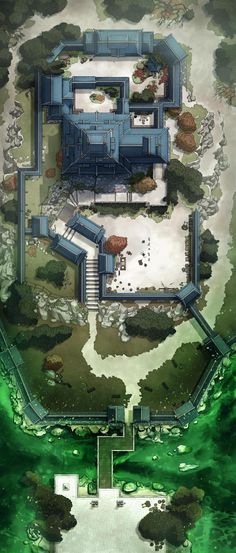
Imperial_Altars_And_Temples_Complex.
Local Cuisine and Accommodation Nearby
Visiting the Imperial Altars and Temples Complex, which includes the serene Sun Altar (日坛) and its neighboring historic sites, offers an enriching experience steeped in ancient Chinese culture. After a day of exploration, you might be wondering where to enjoy a delightful meal or find a comfortable place to stay. Here are some recommendations that will enhance your visit.
Culinary Delights Near the Complex
- Rustico Trattoria
- Cuisine: Italian
- Highlights: Known for its slow-cooked oxtail served on handmade wide noodles, this restaurant is a perfect spot for those craving hearty Western fare. The rich sauce enveloping the noodles makes for an unforgettable dining experience.
- Location: 39 Shenlu Street, Building 10, Chaoyang District, Beijing
- Hours: Daily from 5:00 PM to 10:00 PM
-
Price Range: Approximately 295 RMB per person
-
RIDGE Cafe & Taproom
- Cuisine: Café & Bar
- Highlights: This community café features an industrial chic vibe, offering a selection of craft beers and light bites. It’s an inviting place to relax after a day of sightseeing, perfect for coffee lovers and beer aficionados alike.
- Location: 17 Jianguomen Outer Street, Building 28, First Floor, Room 2-104, Chaoyang District, Beijing
- Hours: Daily from 10:00 AM to Midnight
-
Price Range: Approximately 97 RMB per person
-
Dadong Roast Duck
- Cuisine: Chinese
- Highlights: For a quintessential Beijing dining experience, savor Peking Duck at Dadong, which is renowned for its crispy skin and succulent meat. The restaurant’s modern ambiance adds to the experience.
- Location: Multiple locations; the nearest is just a short drive from the complex.
- Price Range: Approximately 400 RMB per person
Comfortable Stays
- The Beijing Hotel Appartments
- Description: Located conveniently near the complex, this hotel offers modern amenities along with a touch of traditional Chinese decor. Enjoy spacious rooms and a range of facilities including a fitness center and dining options.
- Address: 33 East Chang An Avenue, Dongcheng District, Beijing
-
Price Range: Starting at 1,200 RMB per night
-
Hilton Beijing Wangfujing
- Description: Ideally situated for exploring the city, this upscale hotel features contemporary rooms, a rooftop terrace, and an excellent restaurant. It’s perfect for travelers looking for luxury and comfort.
- Address: 8 Wangfujing East Street, Dongcheng District, Beijing
-
Price Range: Starting at 1,100 RMB per night
-
Novotel Beijing Xin Qiao
- Description: A great mid-range option, this hotel offers comfortable rooms and a friendly atmosphere. It’s conveniently located with easy access to public transport, making it a great base for your explorations.
- Address: 1-58, East Pinggu Street, Beijing
- Price Range: Starting at 700 RMB per night
After immersing yourself in the history and tranquility of the Imperial Altars and Temples Complex, indulge in these culinary delights and restful accommodations for a well-rounded experience in Beijing. Whether you’re craving local cuisine or looking for an international flair, the area surrounding the complex has something to satisfy every palate.
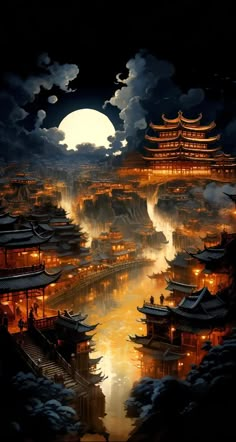
Imperial_Altars_And_Temples_Complex.
Frequently Asked Questions
Frequently Asked Questions
-
What are the Imperial Altars and Temples Complex?
The Imperial Altars and Temples Complex includes five significant historical sites in Beijing: the Temple of Heaven (天坛), the Altar of Earth (地坛), the Altar of the Sun (日坛), the Altar of the Moon (月坛), and the Altar of Agriculture (先农坛). Each site was built during the Ming and Qing dynasties for royal ceremonies to worship various celestial and agricultural deities. -
Are there any entrance fees for visiting these sites?
Most of the altars, including the Altar of the Sun, Altar of the Moon, and Altar of Agriculture, are free to enter. However, the Temple of Heaven and Altar of Earth may have a small entrance fee, typically around 1-15 RMB, depending on the season. It’s advisable to check specific sites for the most current fee information before visiting. -
What is the best time to visit the Imperial Altars and Temples Complex?
Each site is beautiful year-round. However, spring (April to June) and autumn (September to November) are considered the best times to visit due to pleasant weather and stunning seasonal foliage. If you enjoy cultural events, consider visiting during the Lunar New Year when special celebrations often take place. -
How do I get to the Imperial Altars and Temples Complex?
The easiest way to reach each altar is via Beijing’s extensive public transportation system. The Temple of Heaven and Altar of Earth are accessible via subway lines 5 and 2, respectively. For the Altar of the Sun and Altar of the Moon, take public buses or taxis from central Beijing. Ensure to check local maps or apps for directions. -
Is it suitable for families with children?
Absolutely! The spacious parks surrounding each altar provide a safe environment for children to explore and play. Many areas also have facilities for picnics and relaxation. The gardens are beautifully maintained, making them perfect for family outings. -
What should I wear when visiting the altars?
Comfortable clothing and shoes are recommended, as you may do a fair amount of walking. Since many areas are outdoors, consider wearing a hat and sunscreen in the summer or dressing in layers during the cooler months. -
Are there guided tours available?
Yes, many tour companies offer guided tours of the Imperial Altars and Temples Complex, providing in-depth information about the history and cultural significance of each site. Alternatively, you can rent audio guides at some locations for a more personalized experience. -
Can I take photos at the altars?
Yes, photography is generally allowed at the altars, and the stunning architecture and beautiful gardens make for great photo opportunities. However, be respectful of any signs indicating restricted areas and the privacy of visitors during ceremonies or events.
Final Thoughts on Your Trip
As your journey through the Imperial Altars and Temples Complex comes to a close, take a moment to reflect on the rich tapestry of history and culture that envelops these ancient sites. Each altar and temple, from the solemn grounds of the Sun Altar to the tranquil beauty of the Moon Altar, whispers tales of emperors and celestial ceremonies, reminding us of humanity’s timeless connection to nature and the cosmos.
These sacred spaces are not just remnants of the past; they are vibrant reflections of a civilization that revered the harmony between heaven and earth. Strolling through the lush gardens and intricate architecture, you can almost feel the echoes of rituals performed centuries ago, the air thick with reverence and tradition.
Whether you were moved by the grandeur of the architecture, inspired by the serene landscapes, or captivated by the stories etched into the very stones of these sites, your experience here is sure to linger long after you depart. As you leave, carry with you the spirit of curiosity and respect for the cultural heritage that continues to shape our world.
Thank you for exploring the Imperial Altars and Temples Complex with us—may your travels inspire you to seek out more of the world’s hidden treasures. Safe travels!